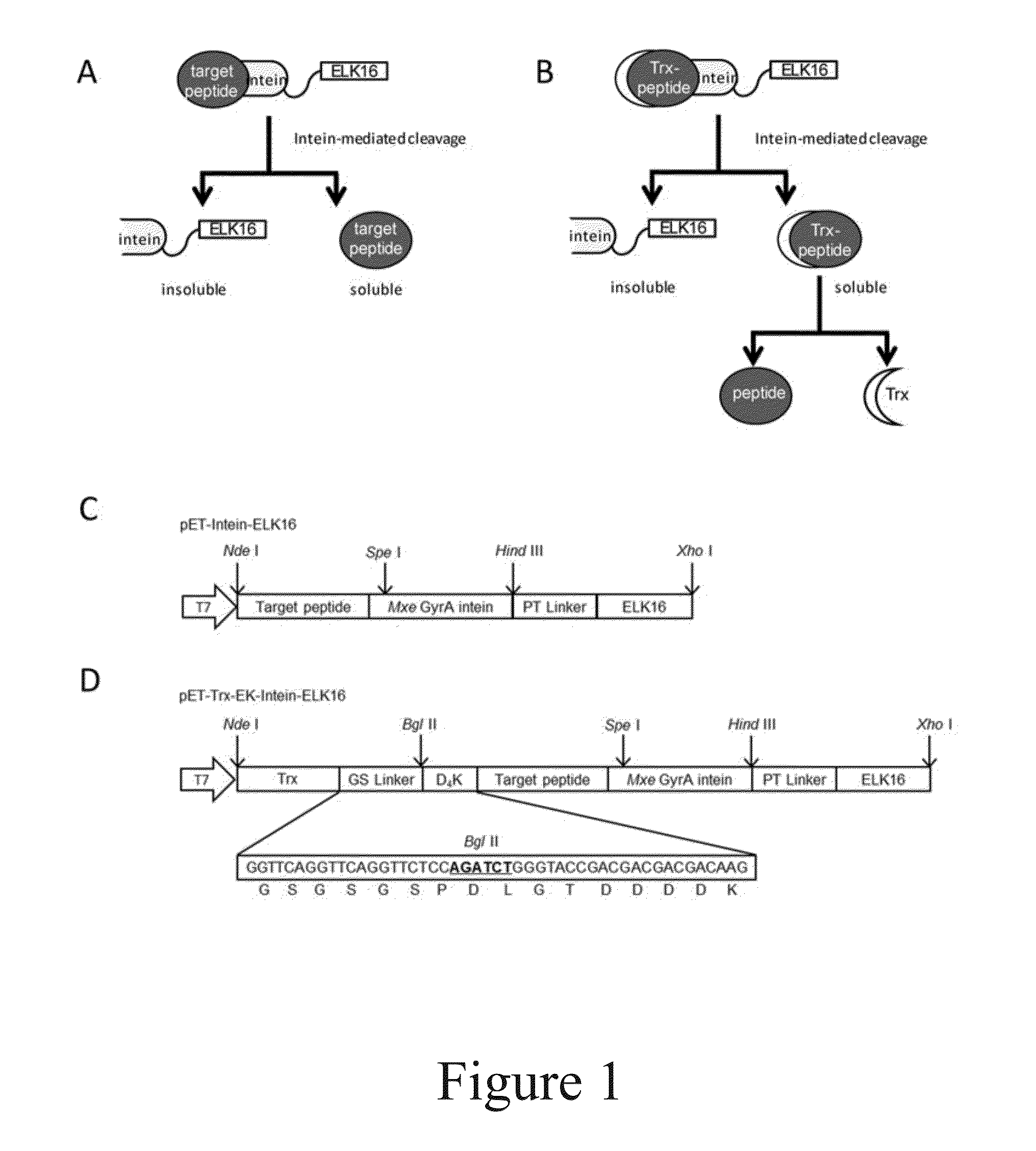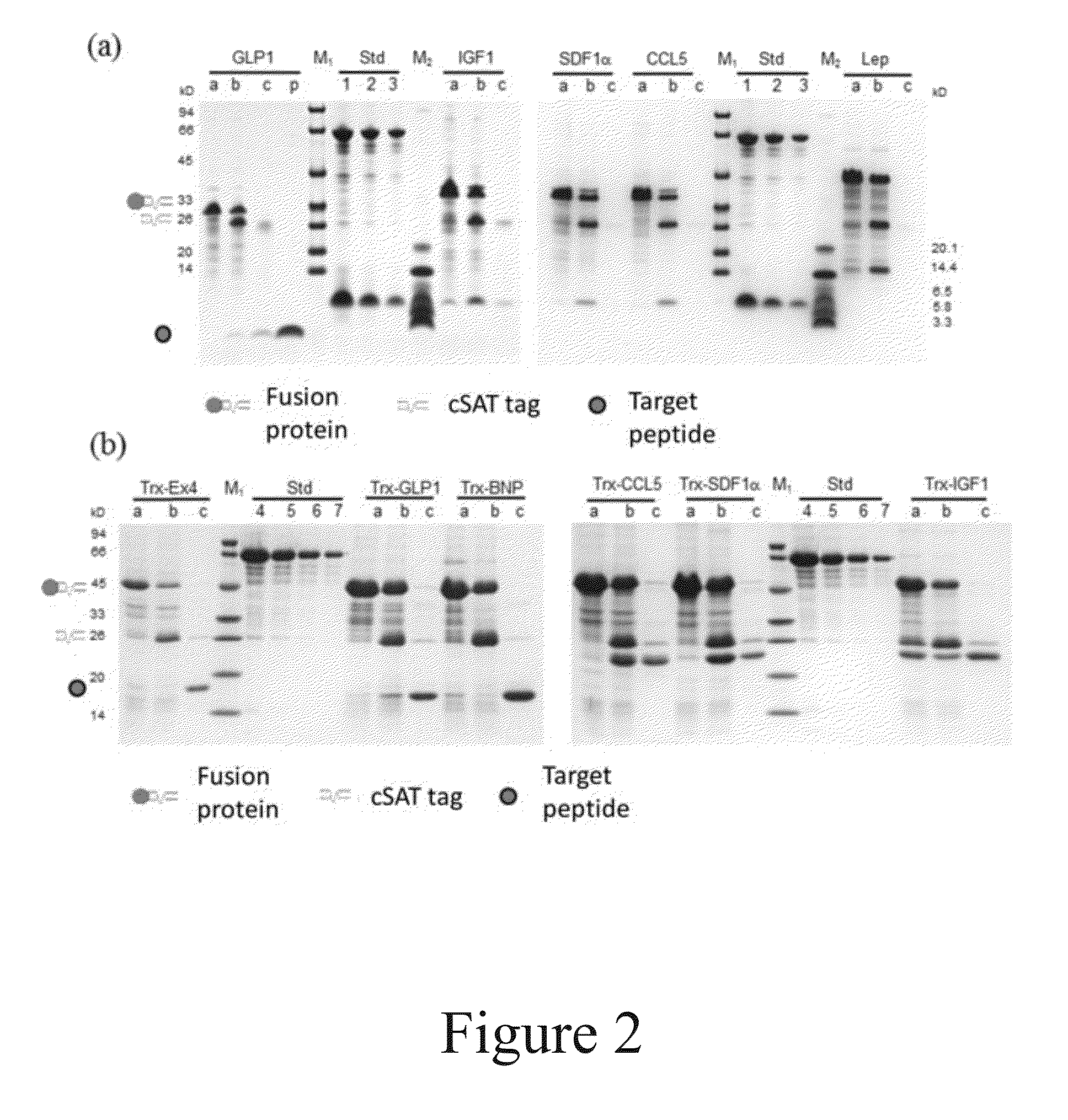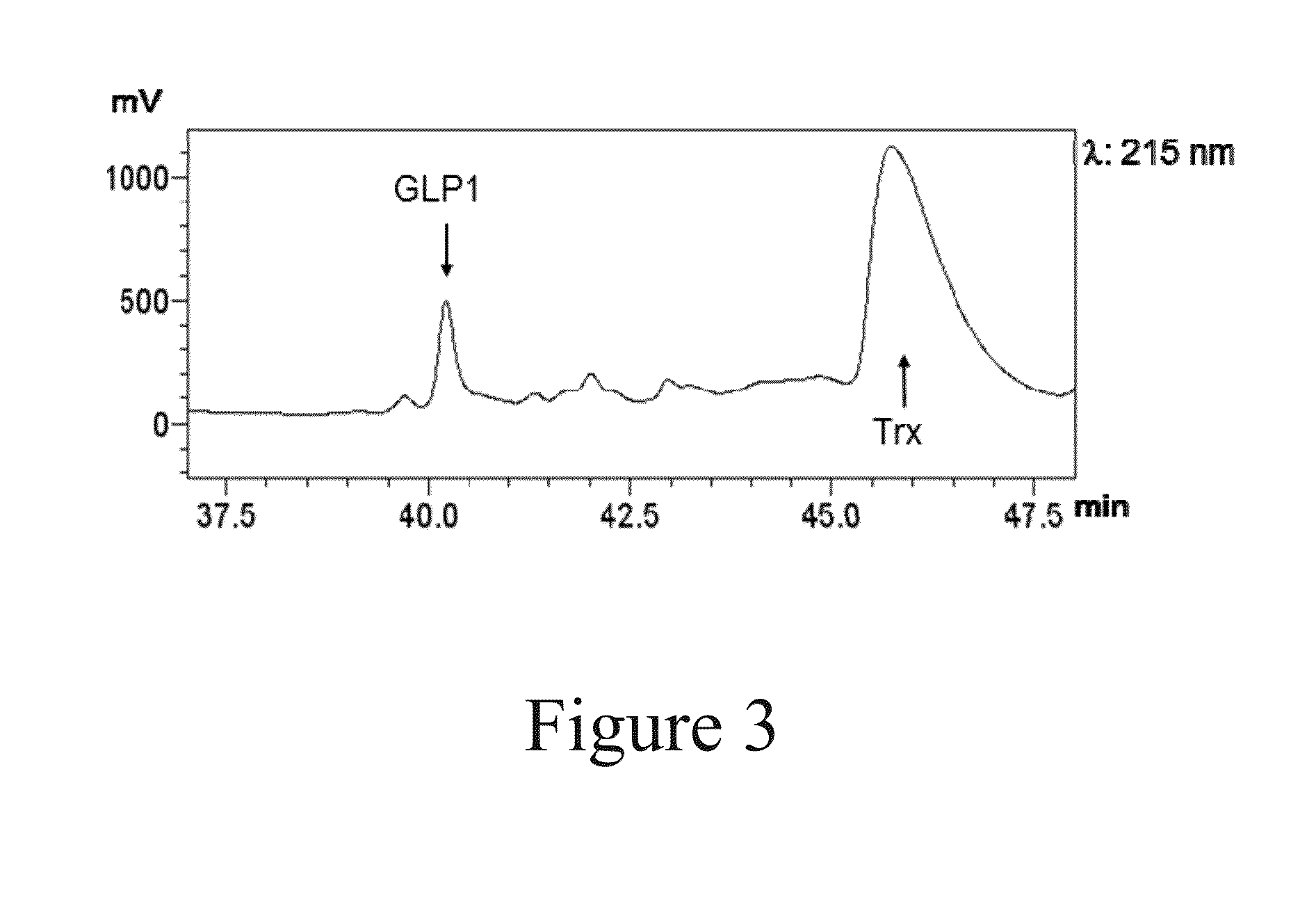Methods for production and purification of polypeptides
a technology of polypeptides and purification methods, applied in the field of gene engineering, can solve the problems of significant reduction of yields, cost and difficulty in synthesis, and bottlenecks in the production of polypeptides, and achieve the effect of cost-efficient and convenien
- Summary
- Abstract
- Description
- Claims
- Application Information
AI Technical Summary
Benefits of technology
Problems solved by technology
Method used
Image
Examples
example 1
Construction of ELK16 Fusion Expression Vector
[0075]The expression vectors pET-LipA-Intein-ELK16 and pET-Trx-EK-Intein-ELK16 used in the Examples were constructed as follows:
[0076]First, the vector pET-LipA-Intein-ELK16 was constructed. Its structure is shown in FIG. 10. The sequence of the “target peptide” in said vector is the sequence of Bacillus subtilis lipase A (LipA).
[0077]The commercial pET-30a(+) plasmid vector from Novogen was used. The nucleotide sequences of PT-type spacer and ELK16 were designed using the online DNAworks. A polynucleotide comprising the nucleotide sequences encoding Bacillus subtilis LipA, the PT-type spacer and ELK16 was synthesized by overlapping PCR with LipA at the N-terminal. This polynucleotide was then inserted into pET-30a(+) between NdeI and XhoI so as to form pET-30a(+)-LipA-ELK16.
[0078]The pET-30a(+)-LipA-ELK16 plasmid and pTWIN1 plasmid (New England Biolab) were extracted using the PurePlasmid Mini Kits (Tiangen Inc). The polynucleotide frag...
example 2
Construction of ELK16 Fusion Expression Constructs for Seven Different Polypeptides
[0084]GLP-1, BNP, Ex-4, CCL5, SDF-1α, IGF-1α and Lep were selected as the target polypeptides to be produced and purified with the method of the present invention. The information for these polypeptides is listed in Table 2.
TABLE 2Optimized Amino acidnucleotideTargetsequencesequence polypeptidelengthExpression in E.coli(SEQ ID NO)(SEQ ID NO)GLP-1 31 aaSoluble as a fusion, otherwise will be1920degraded (Wu et al., 2011)BNP 32 aaSoluble as a fusion, otherwise will be2122degraded (Sun et. al., 2005)Ex-4 39 aaSoluble as a fusion, otherwise will be2324degraded (Bosse-Doeneck et. al., 2008)CCL-5 66 aaInclusion bodies (Proudfoot et. al., 1995)2526SDF-1α 67 aaInclusion bodies (Cho et. al., 2008)2728IGF-1α 70 aaInclusion bodies (Zhang et. al,, 2010)2930Lep146 aaInclusion bodies (Gertler et. al., 1998)3132
[0085]The nucleotide sequences encoding the above target polypeptides were codon-optimized (see Table 2) so...
example 3
Expression and Rough Purification of Seven Different Polypeptides
[0088]The fusion expression constructs obtained in Example 2 were transformed in to E. coli BL21 (DE3) competent cells through the calcium chloride method. Positive clones were identified by colony PCR and plasmid sequencing.
[0089]The positive clones were inoculated into LB medium. Expression was induced with 0.2 mM IPTG at 23° C., 30° C., and 37° C. for 6 hours, respectively. The bacteria cells were collected and the OD600 of which were determined (1 OD means the cell amount in 1 mL medium with OD600 of 1).
[0090]Bacteria cells were resuspended to 20 OD / mL with lysis buffer (2.4 g Tris, 29.22 g NaCl and 0.37 g Na2EDTA.2H2O, adjusted with water to 1 liter, pH 8.2) and subjected to ultrasonication. After centrifugation at 10000 rpm for 10 min at 4° C., the supernatants and pellets were collected respectively. The pellets were washed once with lysis buffer supplemented with 0.5% Triton X-100 to remove cell membrane debris...
PUM
| Property | Measurement | Unit |
|---|---|---|
| solubility | aaaaa | aaaaa |
| length | aaaaa | aaaaa |
| hydrophobic | aaaaa | aaaaa |
Abstract
Description
Claims
Application Information
 Login to View More
Login to View More - R&D
- Intellectual Property
- Life Sciences
- Materials
- Tech Scout
- Unparalleled Data Quality
- Higher Quality Content
- 60% Fewer Hallucinations
Browse by: Latest US Patents, China's latest patents, Technical Efficacy Thesaurus, Application Domain, Technology Topic, Popular Technical Reports.
© 2025 PatSnap. All rights reserved.Legal|Privacy policy|Modern Slavery Act Transparency Statement|Sitemap|About US| Contact US: help@patsnap.com



